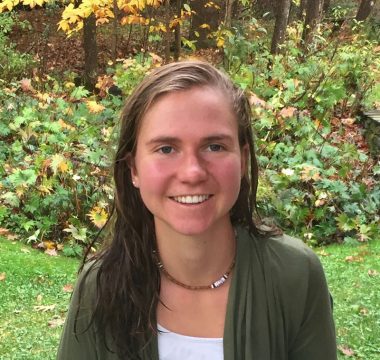Geisel School of Medicine student Lucy Skinner ’22 is lead author on a paper published today in the New England Journal of Medicine (NEJM) that examines the aging physician workforce in rural populations—a demographic shift with important implications for the future—and offers strategies to forestall the projected diminishing access to healthcare.

Working with Peter Buerhaus, PhD, RN, at Montana State University (MSU), Doug Staiger, PhD, at Dartmouth, and David Auerbach, PhD, external adjunct faculty at Montana State University, Skinner says, “with close mentorship and support from Drs. Buerhaus, Staiger, and Auerbach, I used an analytical model that they developed to predict nursing workforce issues to forecast urban and rural physician supply through 2030.”
She found that while the total numbers of rural physicians had been stable over the past 20 years, the rural physician workforce is aging. By 2017, more than half of rural physicians were at least 50 years old and more than 25 percent were at least 60 years old compared to the age distribution trends in the urban physician workforce.
This demographic shift forecasts a troubling future with increasing healthcare disparity—rural residents who are likely to be older, poorer, more commonly uninsured, and have lower life expectancy, will have limited access to physicians, which may reduce preventive care and further exacerbate unmet needs.
“The implication of this is that the supply of physicians in rural areas is going to decline in the next 10 years by 23 percent as older physicians retire and are not being replaced by younger physicians,” Skinner says. “As a result, if nothing is done, the already large disparity in access to physicians between rural and urban populations is going to widen.”
Skinner and her colleagues acknowledge that initiatives involving focused training for medical students likely to practice in underserved rural communities have slowed the decline of rural physicians, but they are unlikely to narrow the care delivery gaps. The greater the shortfall in the rural physician workforce, the harder it may be to attract younger physicians who will need to assume a higher patient workload.
To break this cycle of decline, the researchers offer additional strategies, including expanding graduate medical education programs in rural hospitals along with “expanding access to care through mobile health vans equipped with diagnostic treatment technology and by policymakers acting with greater urgency to overcome barriers that have slowed adoption of telehealth services.”
They also suggest the rapidly growing nurse practitioner workforce could be part of a solution to narrow gaps in healthcare delivery. A high percentage of nurse practitioner training is in primary care and rural medicine—higher than that of physicians. And a growing body of evidence confirms “the high quality and cost-effectiveness of care provided by nurse practitioners and their greater propensity to serve vulnerable populations.”
Skinner, a rising second-year medical student, first became interested in rural medicine while working at MSU in the College of Nursing. Planning on practicing rural medicine, Skinner says, “I am drawn to small, tight-knit communities and to the variety and full-spectrum of care that comes with rural practice. At Geisel, I am a co-leader of Rural Health Scholars, which serves to support fellow students who have interest in practicing rural medicine.”
This research was funded by the Gordon and Betty Moore Foundation whose mission is to foster path-breaking scientific discovery, environmental conservation, and patient care improvements.